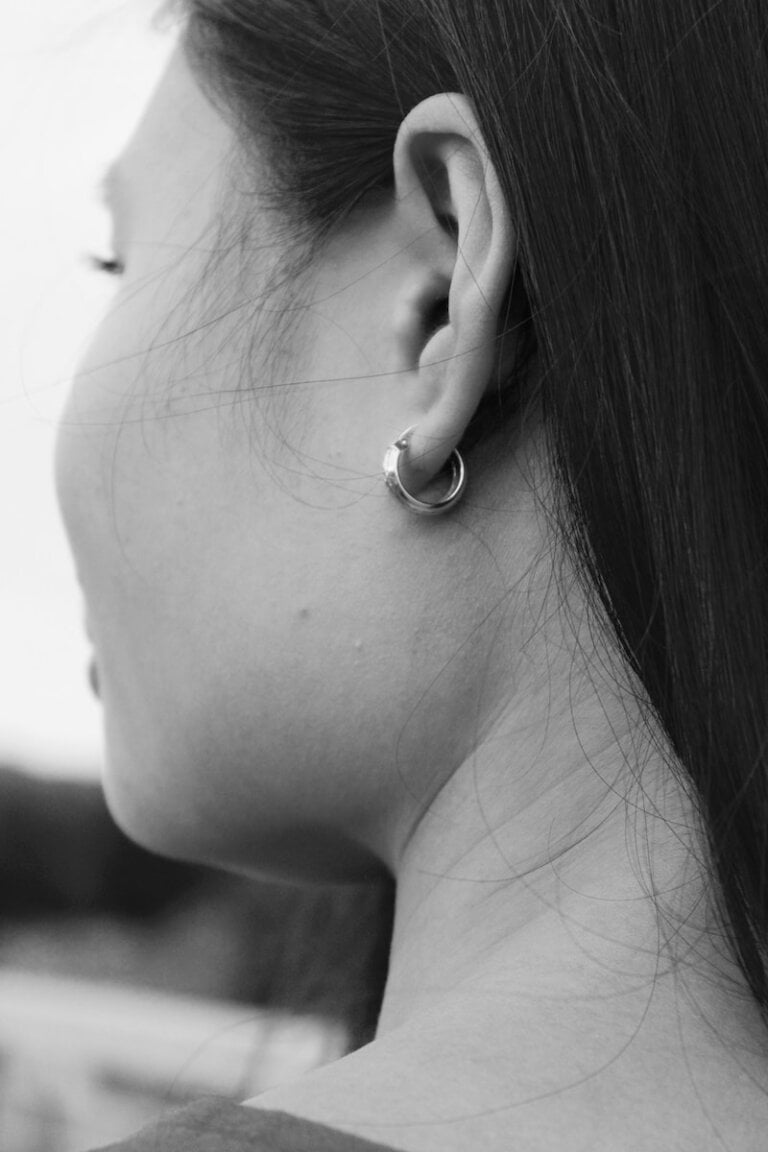Exploring the Spectrum: Understanding Different Types of Ear Infections
Last Updated on 25th April 2024 by Admin
Ear infections are a common health issue that can affect individuals of all ages. When the ear, particularly the middle ear, becomes infected and inflamed, it can lead to discomfort, pain, and even temporary hearing loss. To ensure proper diagnosis, treatment, and prevention, it is crucial to understand the different types of ear infections. In this article, we will delve into the various types of ear infections, their causes, symptoms, and available treatments.
1. Acute Otitis Media (AOM)
Acute Otitis Media, also known as AOM, is one of the most prevalent types of ear infections, especially among children. It occurs when bacteria or viruses infect the middle ear, leading to inflammation and the buildup of fluid. This buildup can result in pain, pressure, and sometimes fever. AOM is often associated with other respiratory infections, such as the common cold.
Causes:
- Bacterial or viral infections: AOM can be caused by either bacteria or viruses that enter the middle ear, usually through the Eustachian tubes.
- Blocked or swollen Eustachian tubes: When the Eustachian tubes become blocked or swollen, it can prevent proper drainage of fluid from the middle ear, increasing the risk of infection.
- Exposure to secondhand smoke: Being exposed to secondhand smoke can irritate the Eustachian tubes, making them more susceptible to infection.
- Allergies or sinus infections: Conditions like allergies or sinus infections can cause inflammation in the nasal passages and Eustachian tubes, increasing the likelihood of developing AOM.
Symptoms:
- Ear pain or discomfort: A common symptom of AOM is ear pain, which can range from mild to severe.
- Fluid drainage from the ear: In some cases, fluid may drain from the infected ear, indicating a rupture of the eardrum.
- Reduced hearing ability: The buildup of fluid in the middle ear can affect hearing, leading to temporary hearing loss.
- Fever: AOM can cause a fever, especially in children.
- Irritability and fussiness in infants and young children: Infants and young children may exhibit irritability and fussiness when experiencing ear pain.
Treatment:
- Antibiotics (if the infection is bacterial): In cases where AOM is caused by a bacterial infection, antibiotics may be prescribed to eliminate the infection.
- Over-the-counter pain relievers: Pain relievers, such as acetaminophen or ibuprofen, can help alleviate ear pain and reduce fever.
- Warm compresses to alleviate pain: Applying a warm compress to the affected ear can help relieve pain and reduce inflammation.
- Rest and plenty of fluids: It is important to rest and stay hydrated to support the body’s immune response and aid in recovery.
- Surgery (in severe cases) to drain fluid from the middle ear: If the fluid buildup in the middle ear is severe and doesn’t resolve with other treatments, surgery may be necessary to drain the fluid.
2. Otitis Media with Effusion (OME)
Otitis Media with Effusion, also referred to as OME, is a condition characterized by the presence of fluid in the middle ear without active infection. It can occur after an acute ear infection or due to other factors that affect the function of the Eustachian tubes. OME typically doesn’t cause severe pain but can result in temporary hearing loss and discomfort.
Causes:
- Residual fluid from a previous ear infection: After an acute ear infection, fluid may remain in the middle ear, leading to OME.
- Allergies or sinus infections: Conditions like allergies or sinus infections can cause inflammation in the Eustachian tubes, impairing their ability to equalize pressure and drain fluid properly.
- Enlarged adenoids: Adenoids are lymphoid tissues located near the Eustachian tubes. When adenoids become enlarged, they can obstruct the Eustachian tubes, leading to the accumulation of fluid in the middle ear.
- Eustachian tubes that do not function properly: Some individuals may have Eustachian tubes that are naturally narrower or fail to open and close properly, making them more prone to developing OME.
Symptoms:
- Mild hearing loss: OME can cause mild hearing loss, making it difficult to hear or understand conversations, especially in noisy environments.
- Feeling of fullness in the ear: Individuals with OME may experience a sensation of fullness or pressure in the affected ear.
- Difficulty in hearing or understanding conversations, particularly in noisy environments: Due to the fluid in the middle ear, individuals with OME may struggle to hear or understand conversations, particularly in environments with background noise.
- Occasionally, ear pain or discomfort: Although not as common as in AOM, OME can sometimes cause mild ear pain or discomfort.
Treatment:
- Often resolves on its own without specific treatment: In many cases, OME resolves on its own without requiring specific treatment. However, regular monitoring is essential.
- Observational approach to monitor the condition: Healthcare professionals may adopt an observational approach to monitor the fluid in the middle ear and the individual’s hearing ability.
- Antibiotics may be prescribed in certain situations: If there are signs of active infection or complications, antibiotics may be prescribed to treat the underlying cause.
- Surgical intervention to address underlying issues (e.g., adenoidectomy): If OME persists or recurs frequently, surgical intervention, such as adenoidectomy (removal of the adenoids), may be recommended to improve Eustachian tube function and prevent fluid buildup.
3. Chronic Suppurative Otitis Media (CSOM)
Chronic Suppurative Otitis Media, known as CSOM, is a long-lasting ear infection characterized by persistent inflammation and discharge from the middle ear. It can be a result of recurring acute ear infections or untreated OME. CSOM is more commonly observed in individuals living in low-resource settings or those with compromised immune systems.
Causes:
- Prolonged or recurrent acute ear infections: When acute ear infections persist or recur frequently, they can lead to chronic inflammation and the development of CSOM.
- Inadequate treatment of acute ear infections: If acute ear infections are not properly treated or if the prescribed antibiotics are not taken as directed, it can contribute to the development of CSOM.
- Trauma to the eardrum: Injury or trauma to the eardrum can create an entry point for bacteria, leading to chronic infection.
- Poor hygiene or unsanitary conditions: Lack of proper ear hygiene and exposure to unsanitary conditions can increase the risk of developing CSOM.
Symptoms:
- Persistent ear discharge (pus or fluid) that may have an unpleasant odor: One of the primary symptoms of CSOM is the persistent discharge of pus or fluid from the infected ear, which may have a foul smell.
- Hearing loss: CSOM can cause varying degrees of hearing loss, ranging from mild to severe.
- Ear pain or discomfort: Individuals with CSOM may experience ear pain or discomfort, especially during episodes of active infection.
- Fever: In some cases, CSOM can cause fever, indicating an ongoing infection.
- In severe cases, complications such as mastoiditis or meningitis may occur: If left untreated or inadequately managed, CSOM can lead to complications like mastoiditis (infection of the mastoid bone) or meningitis (infection of the lining around the brain).
Treatment:
- Antibiotics to treat infection: The primary treatment for CSOM involves a course of antibiotics to eliminate the infection and reduce inflammation.
- Regular cleaning and ear hygiene practices: Proper cleaning and maintenance of ear hygiene are crucial in managing CSOM and preventing further infection.
- Medication to control pain and inflammation: Pain relievers and anti-inflammatory medications may be prescribed to manage pain and reduce inflammation.
- Surgery (e.g., tympanoplasty) to repair the eardrum or address complications: In cases where CSOM does not respond to conservative treatments or complications arise, surgical intervention such as tympanoplasty (reconstruction of the eardrum) may be necessary.
- Management of underlying conditions affecting the immune system: If CSOM is associated with compromised immune function, it is important to manage the underlying condition to prevent recurrent infections.
4. External Otitis (Swimmer’s Ear)
External otitis, commonly known as swimmer’s ear, is an infection of the ear canal. It typically occurs when water remains trapped in the ear, creating a favorable environment for bacterial or fungal growth. Swimmer’s ear can cause itchiness, pain, and discomfort, especially when touching or moving the earlobe.
Causes:
- Trapped water in the ear canal: When water becomes trapped in the ear canal, it provides a moist environment that promotes the growth of bacteria or fungi.
- Scratching or damaging the ear canal with cotton swabs or other objects: Inserting cotton swabs or other objects into the ear canal can cause irritation or damage, increasing the risk of infection.
- Allergic reactions to hair products or jewelry: Some individuals may experience an allergic reaction to hair products or jewelry, leading to inflammation and infection in the ear canal.
- Bacterial or fungal infections: Bacteria or fungi that enter the ear canal can cause infection, especially when the natural protective mechanisms are compromised.
Symptoms:
- Itchiness and irritation in the ear canal: Swimmer’s ear often presents with itchiness and irritation in the affected ear canal.
- Pain or discomfort, exacerbated by touching or moving the ear: Touching or moving the earlobe can worsen the pain or discomfort associated with swimmer’s ear.
- Swelling and redness in the ear canal: The infection can cause swelling and redness in the ear canal.
- Drainage of pus or fluid: In some cases, swimmer’s ear may result in the drainage of pus or fluid from the infected ear.
Treatment:
- Antibiotic or antifungal ear drops: Treatment for swimmer’s ear typically involves the use of antibiotic or antifungal ear drops to eliminate the infection.
- Over-the-counter pain relievers: Over-the-counter pain relievers can help alleviate the pain and discomfort associated with swimmer’s ear.
- Avoiding water exposure while the infection heals: It is important to avoid exposing the infected ear to water until the infection has completely healed.
- Keeping the ear dry and clean: Maintaining proper ear hygiene and keeping the ear dry can help prevent the recurrence of swimmer’s ear.
- Refraining from inserting any objects into the ear canal: To prevent further irritation or damage, it is crucial to refrain from inserting any objects, including cotton swabs, into the ear canal.
Conclusion
Ear infections can vary in terms of severity, symptoms, and causes. Recognizing the different types of ear infections is essential for prompt and accurate treatment. If you or your child experience symptoms indicative of an ear infection, such as pain, discharge, or hearing loss, it is crucial to consult a healthcare professional for proper diagnosis and appropriate management. Early detection and appropriate treatment can help prevent complications and promote a speedy recovery.
Note: The complete article is provided in Markdown format below:
“`
Ear infections are a common health issue that can affect individuals of all ages. When the ear, particularly the middle ear, becomes infected and inflamed, it can lead to discomfort, pain, and even temporary hearing loss. To ensure proper diagnosis, treatment, and prevention, it is crucial to understand the different types of ear infections. In this article, we will delve into the various types of ear infections, their causes, symptoms, and available treatments.
1. Acute Otitis Media (AOM)
Acute Otitis Media, also known as AOM, is one of the most prevalent types of ear infections, especially among children. It occurs when bacteria or viruses infect the middle ear, leading to inflammation and the buildup of fluid. This buildup can result in pain, pressure, and sometimes fever. AOM is often associated with other respiratory infections, such as the common cold.
Causes:
- Bacterial or viral infections: AOM can be caused by either bacteria or viruses that enter the middle ear, usually through the Eustachian tubes.
- Blocked or swollen Eustachian tubes: When the Eustachian tubes become blocked or swollen, it can prevent proper drainage of fluid from the middle ear, increasing the risk of infection.
- Exposure to secondhand smoke: Being exposed to secondhand smoke can irritate the Eustachian tubes, making them more susceptible to infection.
- Allergies or sinus infections: Conditions like allergies or sinus infections can cause inflammation in the nasal passages and Eustachian tubes, increasing the likelihood of developing AOM.
Symptoms:
- Ear pain or discomfort: A common symptom of AOM is ear pain, which can range from mild to severe.
- Fluid drainage from the ear: In some cases, fluid may drain from the infected ear, indicating a rupture of the eardrum.
- Reduced hearing ability: The buildup of fluid in the middle ear can affect hearing, leading to temporary hearing loss.
- Fever: AOM can cause a fever, especially in children.
- Irritability and fussiness in infants and young children: Infants and young children may exhibit irritability and fussiness when experiencing ear pain.
Treatment:
- Antibiotics (if the infection is bacterial): In cases where AOM is caused by a bacterial infection, antibiotics may be prescribed to eliminate the infection.
- Over-the-counter pain relievers: Pain relievers, such as acetaminophen or ibuprofen, can help alleviate ear pain and reduce fever.
- Warm compresses to alleviate pain: Applying a warm compress to the affected ear can help relieve pain and reduce inflammation.
- Rest and plenty of fluids: It is important to rest and stay hydrated to support the body’s immune response and aid in recovery.
- Surgery (in severe
FAQ
Q: What is acute otitis media (AOM)?
A: Acute otitis media (AOM) is a common type of ear infection that occurs when bacteria or viruses infect the middle ear, leading to inflammation and the buildup of fluid.
Q: What are the causes of AOM?
A: AOM can be caused by bacterial or viral infections, blocked or swollen Eustachian tubes, exposure to secondhand smoke, or allergies/sinus infections.
Q: What are the symptoms of AOM?
A: Symptoms of AOM include ear pain or discomfort, fluid drainage from the ear, reduced hearing ability, fever, and irritability/fussiness in infants and young children.
Q: What are the treatment options for AOM?
A: Treatment for AOM may include antibiotics (if the infection is bacterial), over-the-counter pain relievers, warm compresses, rest and plenty of fluids, and surgery in severe cases to drain fluid from the middle ear.







